It is well to be noted that prefilled products, specifically prefilled biologics, happen to be a growing segment in the pharmaceutical sector. Prefilled syringes as well as pens offer detailed dosing, thereby decreasing the error risk in the process of administration. They also go on to eradicate the requirement for reconstitution, thereby making them more comfortable for patients along with healthcare professionals. The fact is that prefilled biologics go on to address the surge in the demand for customized medicine but homecare, and self-administration choices, along with the desire for an enhanced patient experience. This enables the patients to go ahead with their treatment, and that too in the comfort of their homes, while at the same time decreasing the expenditure of the healthcare system as much fewer trips to the doctor or the hospital are required.
The upgraded innovation in terms of prefilled biologics such as auto injectors, pens, as well as on-body delivery systems goes on to accommodate much higher volumes and viscous fluids, multiplication of longer acting injectables with longer dosage intervals, smaller batches, and the ever-present requirement so as to decrease the cost of healthcare.
Due to this, the manufacturers happen to be focusing on device designs that are user-friendly with traits like intuitive mechanisms for injection, ergonomic grips, as well as safety features in order to prevent those accidental needlesticks. There are some prefilled biologic packaging’s that integrate digital technologies like Bluetooth-led devices as well as smartphone applications. These devices, which are connected, can go on to track the dosing history, help with reminders, and also process data to the healthcare providers, thereby enhancing adherence in addition to patient tracking.
Finally, sustainability happens to be a very important consideration, and hence the manufacturers are indeed discovering ways to reduce the environmental effect through moving away from non-renewable objects, optimizing packaging weight and size, getting-in recycled and recyclable content or biodegradable materials, and also throttling reusability.
Significantly, primary packaging development happens to include ready-to-use containers along with designs so as to address the high viscosity products, syringe volumes that are larger to meet the dosing needs of longer acting biologics, cryogenic storage as well as distribution, a bigger emphasis on self-administration as well as patient comfort, and also container elevations that happen to reduce the risk of product and package interactions. This reduced interaction risk makes sure that the biologics go on to maintain their efficacy along with safety profiles.
Due to sensitive substances as well as environmental needs that are challenging, biologics happen to place unique demands when it comes to primary as well as secondary packaging.
It is well to be noted that there are numerous APIs that are light-sensitive, and the fact is that large and intricate molecules in various molecular entities are oxygen sensitive. Cell and gene therapies and messenger RNA-mRNA substances should be stored as well as transported at temperatures that are very low. Hence, the development of syringes has focused on designs that are capable of withstanding conditions like low temperatures without losing functionality or the container closure integrity.
One example is the TOPPAC freeze prefilled syringe incepted by SCHOTT Pharma, which happens to be designed for drugs that need storage as well as storage at temperatures that are approaching -100 degrees Celsius.
As drug products have progressed towards more intricate proteins as well as longer intervals in between injections, primary packaging has to evolve. This evolution needs high levels of inertness so as to reduce chemical interactions that can go on to cause aggregation, which could as well trigger an immune response in a particular patient.
Notably, glass goes on to dominate; however, cyclic olefin copolymer COC/ cyclic olefin polymer- COP syringes happen to be pretty well-established choices because of their resilience to break, much lighter weight, lower option in terms of protein absorption, as well as compatibility with cryogenic conditions.
Unfortunately, COP/COC’s barrier traits may not be enough in terms of biologics that are oxygen-sensitive as well as biosimilars. But specialty labels with built-in barrier functions can indeed overcome this issue. Syringe closure wrap upgrades the barrier protection by way of wrapping like a second skin around the barrel of the syringe as well as the cap and sealing in the upper end.
An integrated first-opening indication when it comes to the syringe-closure-Wrap also offers tamper evidence. Label structures can be personalized for the barrier requirements of the API within the syringe.
The primary trends in fill and finish lines when it comes to biologic products happen to be the growing adoption in terms of RTU containers, high levels in terms of automation as well as flexibility, as well elevated dependence on the CDMOs.
RTU containers happen to result in a much more flexible, leaner operation along with enhanced contamination control. Flexibility, specifically in terms of handling smaller batches that are required for clinical trials or customized medicine, happens to be becoming quite a necessary trait of the fill and finish line. At time of automating, some companies happen to transition to completely automated systems while there are others which take an approach which is semi-automated. All said and done, drugs indeed are becoming very complex and, at the same time, very sensitive too and hence the prefilled biologics packaging sector happens to be characterized due to the ongoing innovation, which happens to be aimed at elevating the safety part, offering more convenience, and taking care of the concerns related to sustainability. It is therefore very critical for the pharmaceutical companies as well as the containment suppliers to work in tandem right from the beginning so as to make sure that the medication gets stored and is also administered in a much safer way.





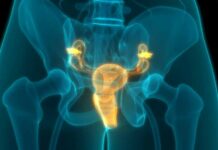
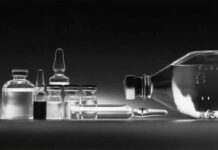


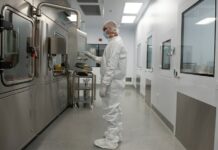

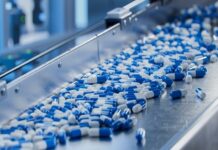

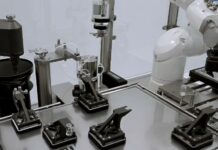



![Sirio Launches Global Research Institute for Longevity Studies [SIA]](https://www.worldpharmatoday.com/wp-content/uploads/2019/09/Sirio-218x150.jpg)


